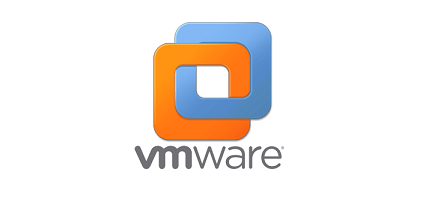How to Install VMware on CentOS Stream 10: Step-by-Step Guide

This guide will walk you through installing VMware on CentOS Stream, step by step, from prerequisites to best practices.
Table of Contents
- Introduction
- What is VMware?
- Why Use VMware on CentOS Stream?
- Prerequisites
- Preparing CentOS Stream for VMware Installation
- Downloading VMware Workstation
- Installing Required Packages and Dependencies
- Installing VMware Workstation on CentOS Stream
- Configuring VMware for First Use
- Running Your First Virtual Machine
- Troubleshooting Common Issues
- Updating or Uninstalling VMware on CentOS Stream
- Best Practices After Installation
- Conclusion
1. Introduction
Virtualization is a cornerstone of modern IT infrastructure, enabling developers and system administrators to run multiple operating systems on a single machine. VMware Workstation is one of the most popular virtualization tools, and CentOS Stream—a rolling-release Linux distribution—is a great host environment.
2. What is VMware?
VMware is a virtualization platform that allows users to run multiple operating systems as virtual machines (VMs) on a single physical host. Popular VMware products include:
- VMware Workstation Pro: Full-featured virtualization for professionals.
- VMware Workstation Player: Free version for personal use.
3. Why Use VMware on CentOS Stream 10?
Running VMware on CentOS Stream provides:
- Stability: CentOS is trusted in enterprise environments.
- Flexibility: Test multiple operating systems on one machine.
- Productivity: Create isolated environments for development, testing, or training.
4. Prerequisites
Before installing VMware, ensure you have:
- CentOS Stream (latest release) installed.
- Root or sudo privileges.
- At least 8 GB RAM (16 GB recommended).
- At least 50 GB free storage.
- Internet access for downloading packages.
5. Preparing CentOS Stream for VMware Installation
First, update your system:
sudo dnf update -y
sudo dnf upgrade -yReboot if necessary:
sudo reboot6. Downloading VMware Workstation
Head to the official VMware website:
👉 VMware Workstation Download Page
Download the latest .bundle file for Linux (e.g., VMware-Workstation-Full-*.x86_64.bundle) and place it in your ~/Downloads folder.
7. Installing Required Packages and Dependencies
VMware requires compilation of kernel modules, so we need to install development tools:
sudo dnf groupinstall "Development Tools" -y
sudo dnf install kernel-headers kernel-devel gcc make perl -yCheck that kernel headers match your running kernel:
uname -r
rpm -q kernel-develIf mismatched, update the kernel and reboot.
8. Installing VMware Workstation on CentOS Stream
- Navigate to the directory with the
.bundlefile:
cd ~/Downloads- Make the file executable:
chmod +x VMware-Workstation-Full-*.x86_64.bundle- Run the installer:
sudo ./VMware-Workstation-Full-*.x86_64.bundle- Follow the on-screen wizard to complete installation.
9. Configuring VMware for First Use
Start VMware:
vmwareThe first time you launch, VMware will build kernel modules. Allow permissions if prompted.
10. Running Your First Virtual Machine
- Open VMware Workstation.
- Click Create a New Virtual Machine.
- Select ISO or physical disk for OS installation.
- Allocate CPU, memory, and storage resources.
- Start the virtual machine.
11. Troubleshooting Common Issues
- Kernel headers mismatch
Update headers:
sudo dnf install kernel-headers-$(uname -r) kernel-devel-$(uname -r)- Missing libraries
sudo dnf install libaio libaio-devel -y- VMware service not starting
sudo systemctl restart vmware12. Updating or Uninstalling VMware on CentOS Stream
Update
Download the latest bundle file and re-run the installer:
sudo ./VMware-Workstation-Full-*.x86_64.bundleUninstall
To remove VMware:
sudo vmware-installer -u vmware-workstation13. Best Practices After Installation
- Keep CentOS Stream updated with
dnf update -y. - Assign adequate RAM and CPU to virtual machines.
- Use snapshots to save VM states before risky changes.
- Regularly check VMware for patches and updates.
14. Conclusion
Installing VMware Workstation on CentOS Stream is straightforward once dependencies are configured correctly. With VMware, you can run multiple operating systems, test environments, and build development sandboxes—all from a single machine.
This guide has covered everything from prerequisites to troubleshooting, giving you a smooth start with VMware on CentOS Stream.